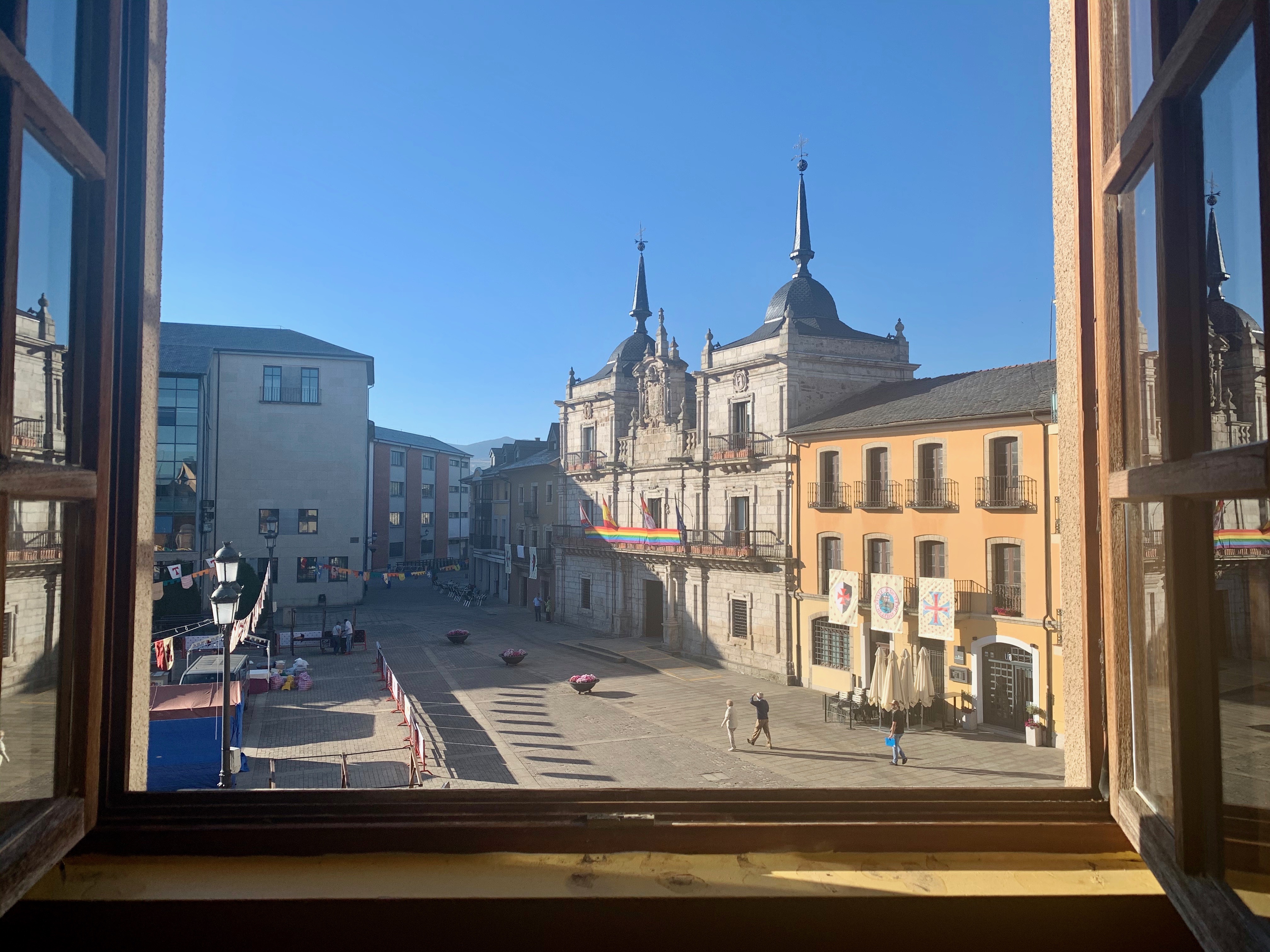Motivación
Pues estaba yo solo en Sevilla a finales del mes de Junio, aun en mitad de esta maldita pandemia, aunque ya con menos restricciones sobre el movimiento en toda España, que se me vino a la cabeza una idea que tenía rondando hace unos años y que por una cosa u otra, siempre aplazaba, y no es más que el titular de este artículo, hacer el Camino de Santiago, declarado Patrimonio de la Humanidad.
Sabía que mi vuelta al trabajo se acercaba, así que no disponía de mucho tiempo para hacerlo como me hubiera gustado, pero algo me dijo que ahora era el momento y que quizás una primera y corta aproximación me daría la dimensión necesaria para empezar a conocer el «Camino», así que me lié la manta a la cabeza, me informé a través de las redes sociales y a través de un par de amigos acerca del qué, del cómo y del cuándo y allí que me fuí!
El «Camino» se puede realizar de muchas maneras, siendo las más tradicionales y por este orden, a pie, en bicicleta o a caballo. También es posible hacerse de forma combinada, alternando algunas de ellas. En mi caso, decidí hacerlo a pie.



🇬🇧 Motivation
So I was completely alone in Seville at the end of June, in the middle of this damn pandemic, although with fewer restrictions on movement throughout Spain, so an idea that I had hanging around a few years ago came to my mind and that for one thing or another, I have always postponed, and it is just the headline of this article, to do the «St. James’ Way», declared a World Heritage Site.
I knew that my return to work was approaching, so I did not have much time to do it as I would have liked, but something told me that now was the time and that perhaps a first and short approach would give me the necessary dimension to begin to know the «Way», so I threw the blanket over my head, I got some practcal information through the networks and through a couple of friends about what, how and when and there that I left!
The «Way» can be done in many ways, the most traditional being, in this order, on foot, by bicycle or on horseback. It is also possible to do it in combination, alternating some of them. In my case, I decided to do it on foot.
Historia
El Camino de Santiago nace en la Edad Media con el hallazgo de la tumba del Apóstol Santiago, lo cual desata una ola de peregrinaciones católicas que tienen como propósito o meta llegar a la Catedral de Santiago de Compostela en donde se ubica su cripta. El Camino de Santiago no es solo un itinerario que dirige nuestros pasos a la tumba del Apóstol, sino que con los siglos, se ha convertido en una vía de civilización y de desarrollo cultural, artístico y social en toda Europa. Por ello, el Camino de Santiago fue declarado Patrimonio de la Humanidad, además de convertirse en el primer Itinerario Cultural Europeo.
Como anécdota os contaré que desde 1.122 se celebra el Año Santo Jacobeo todos los años en los cuales el día 25 de Julio cae en domingo. En un año Jacobeo lo que se consigue es la «Gran Perdonanza» o la «Indulgencia Plenaria», por la cual se te perdonan todos los pecados cometidos. Para conseguirla, tienes que cumplir con una serie de condiciones: Visitar la Catedral de Santiago, confesarte quince días antes o después de estar en la Catedral, asistir a una misa rezando por tus pecados y por las intenciones del Papa y comulgar en esa misa. El próximo Año Jacobeo será en 2021 y en el suele haber un número mayor de peregrinos.

La concha del peregrino, es sin duda el símbolo del Camino de Santiago más universal y representativo.
🇬🇧 The pilgrim’s shell is undoubtedly the most universal and representative symbol of the St. James Way.
History
«St. James Way» was born in the Middle Ages with the discovery of the tomb of the Apostle Santiago, which unleashes a wave of Catholic pilgrimages that have the purpose or goal of reaching the Cathedral of Santiago de Compostela where his crypt is located. «St. James Way» is not only an itinerary that directs our steps to the tomb of the Apostle, but over the centuries, it has become a path of civilization and cultural, artistic and social development throughout Europe. For this reason, «St. James Way» was declared a World Heritage Site, in addition to becoming the first European Cultural Itinerary.
As an anecdote I will tell you that since 1,122 the Jacobean Holy Year has been celebrated every year in which July 25 falls on Sunday. In a Jacobean year what you get is the «Great Forgiveness» or «Plenary Indulgence», by which all the sins you have committed are forgiven. To get it, you have to meet a series of conditions: Visit the Cathedral of Santiago, go to confession fifteen days before or after being in the Cathedral, attend a Mass praying for your sins and for the Pope’s intentions and take Communion at that Mass. The next Jacobean Year will be in 2021 and there is usually a greater number of pilgrims.
Elección
En un principio, y sabiendo que disponía de solo unos días, cuatro a seis máximo, mi idea era solo una primera toma de contacto con «El Camino» y hacer algunas etapas sueltas, sin mucha parafernalia ni organización, únicamente con una pequeña mochila, el GPS del móvil y algo de buena música con que amenizar parte de las caminatas y un poco de lectura para el descanso en las tardes de verano. Así que una vez estudiadas todas las alternativas de rutas disponibles, me decidí por el Camino Francés, por ser el más famoso y elegido por la mayoría de peregrinos y porque lo tenía en mente desde siempre y solo tenía que decidirme por qué parte de dicho camino realizar.
Considerada calle mayor de Europa, el Camino de Santiago Francés desde Roncesvalles es, sin duda, la ruta del Camino de Santiago con mayor tradición, aunque la ruta más antigua recaiga en el Camino Primitivo, que transcurre por el norte de España. El Camino Francés consta de 32 etapas en su recorrido comenzando en la localidad francesa de Saint Jean Pied de Port. Y desde Roncesvalles, la primera localidad española del Camino Francés, hasta Santiago de Compostela hay una distancia de unos 790 kilómetros que se pueden completar aproximadamente en unas 32 etapas, caminando a una media de 25 km por día. De esta forma, estaremos atravesando la Península Ibérica desde el Pirineo Navarro, hasta Santiago de Compostela, en Galicia y final del Camino de Santiago
Aunque el Camino Francés se realiza a lo largo del norte de España, normalmente los peregrinos buscan hacer los últimos 100 km ya que es la distancia que se necesita para conseguir la Compostela o también conocida como “Compostelana”. Estos últimos 100 km empiezan desde la localidad gallega de Sarria, pero tampoco será esta mi elección definitiva.
De las 32 etapas del Camino Francés, desde Saint Jean Pied de Port hasta Santiago de Compostela, estas son las cuatro que finalmente pude hacer y que me supieron a poco, por lo que muy pronto espero poder repetir:
- Ponferrada – Villafranca del Bierzo
- Villafranca del Bierzo- O Cebreiro
- O Cebreiro – Triacastela
- Triacastela – Sarria (por Samos)
- Santiago de Compostela

«El camino francés es la ruta más popular y con más tradición del ámbito jacobeo. El tránsito de peregrinos a lo largo de los siglos lo ha convertido en una vía cultural, artística y sociológica por la que circulan 7 de cada 10 peregrinos que llegan a la tumba del apóstol Santiago»
«St. James French Way» is the most popular and traditional route in the Jacobean area. The transit of pilgrims over the centuries has turned it into a cultural, artistic and sociological route through which 7 out of 10 pilgrims who come to visit the tomb of the apostle Santiago «

The Election
At first, and knowing that I had only a few days, four to six maximum, my idea was only a first contact with «The Way» and do some individual stages, without much paraphernalia or organization, only with a small backpack, the GPS mobile phone and some good music to liven up part of the walks and a little reading for the rest after the hard walks in the summer afternoons. So once I had studied all the available routes alternatives, I decided on the «French Way», because it was the most famous and chosen by most pilgrims and because I had always had it in my mind and I just had to decide which part of «The St.James French Way» take.
Considered the main street in Europe, «St. James French Way» from Roncesvalles is, without a doubt, the route of «St. James Way» with the longest tradition, although the oldest route falls on «The Primitive St. James Way», which runs through northern Spain. «St. James French Way» consists of 32 stages in its route starting in the French town of Saint Jean Pied de Port. And from Roncesvalles, the first Spanish town on the «French Way», to Santiago de Compostela there is a distance of about 790 kilometers that can be completed in approximately 32 stages, walking at an average of 25 km per day. In this way, we will be crossing the Iberian Peninsula from the Navarrese Pyrenees, to Santiago de Compostela, in Galicia and the end of the «St. James Way».
Although the «French Way» runs along the north of Spain, normally pilgrims seek to do the last 100 km since it is the distance that is needed to get to «Compostela» or also known as “Compostelana”. These last 100 km start from the Galician town of Sarria, but this will not be my final choice either.
From the 32 stages of the «French Way», from Saint Jean Pied de Port to Santiago de Compostela, these are the four that I was finally able to do and that they did feel to me very short ones, so very soon I hope to be able to repeat:
- Ponferrada – Villafranca del Bierzo
- Villafranca del Bierzo- O Cebreiro
- O Cebreiro – Triacastela
- Triacastela – Sarria (by Samos)
- Santiago de Compostela


Necesidades básicas
Y tras un poquito de historia, os pondré en antecedentes sobre las necesidades básicas a la hora de preparar el Camino de Santiago:
El Calzado quizá sea la parte más importante de todo el equipaje. Piensa que vas a caminar una media de 20 km diarios. La recomendación es clara: no estrenes el calzado para ir al Camino. En cuanto al tipo de calzado depende de gustos. Te puede servir tanto una bota como una zapatilla de montaña o deporte. La bota te va a venir bien en los días que tengas fuertes subidas o en épocas frías y lluviosas, al sujetarte mejor el tobillo, pero estas zonas son pocas y en el resto de las etapas y épocas más calurosas, vas a ir mejor con zapatilla. Es conveniente llevar otro calzado para que cuando llegues al albergue descanses los pies. Unas chanclas vienen de cine para descansar y airear los pies en los riachuelos del Camino.
La Mochila va a ser la otra clave para que tu camino sea más sencillo. Lleva solamente lo que sea necesario. La carga recomendada suele ser el 10% de tu peso. Son aconsejables las que tienen una estructura rígida en la parte trasera para que no sufra la espalda y que también puedas ajustarlas por la cintura para evitar el balanceo al andar. El tipo de ropa depende de la época del año en la que vayas, yo recomiendo para las caminatas, camisetas cómodas, pantalones cortos/largos, un bañador y muchos calcetines (recomiendo cambiártelos cada 2-3 horas durante las etapas). También una toalla pequeña viene bien, gorra, gafas de sol, algo de música y un neceser, y creo que no olvido nada… Para terminar con la mochila, en casi todas las etapas, hay un servicio de transporte que te la lleva desde la salida hasta el albergue o alojamiento en el que vayas a terminar, y te da un plus de comodidad. Yo en mi caso, no lo utilicé.
En cuanto al Alojamiento, existe una extensa red de alojamientos, siendo los más comunes y económicos, los albergues, herederos de los antiguos Hospitales para peregrinos, regidos por el clero y donde se ofrecía alojamiento, manutención y atención sanitaria a los enfermos. También hay una red enorme de casas rurales y hoteles con precios algo más altos pero comedidos y donde se puede encontrar el que venga mejor a cada bolsillo. En mi caso elegí esta última opción, no tanto por no tener que compartir habitación con desconocidos, como es habitual en los albergues, sino también por el respeto y cuidado a tener a la pandemia de coronavirus actual. Y así además evitas tener que llevar saco de dormir a la espalda y te quitas un peso de encima.



Basic needs
And after a little bit of history, I will give you a background on the basic needs when preparing «St. James Way»:
Footwear is perhaps the most important part of all luggage. Think that you are going to walk an average of 20 km per day. The recommendation is clear: do not wear your shoes for the first time to go to the «Way». As for the type of footwear it depends on taste. A boot as well as a mountain or sports shoe can serve you. The boot will come in handy on days when you have strong climbs or in cold and rainy seasons, by holding your ankle better, but these areas are few and in the rest of the stages and hotter times, you will go better with a sports shoe probably. It is advisable to bring other footwear so that when you arrive at the hostel you can rest your feet. Some flip-flops come so well to rest and air your feet in the streams along the «Way».
The Backpack will be the other key to making your journey easier. Take only what is necessary. The recommended load is usually 10% of your weight. Those with a rigid structure at the back are advisable so that the back does not suffer and that you can also adjust them at the waist to avoid swaying when walking. The type of clothing depends on the time of year you go, I recommend for the walks, comfortable t-shirts, shorts / long pants, a swimsuit and lots of socks (I recommend changing them every 2-3 hours during the stages). Also a small towel is good, a hat, sunglasses, some music and a toiletry bag, and I think I have not forgotten anything … To finish with the backpack, in almost all stages, there is a transport service that takes you from the departure to the hostel or accommodation where you are going to finish, and it gives you an extra comfort. In my case, I did not use it.
Regarding Accommodation, there is an extensive network of accommodation, the most common and economical being the hostels, heirs of the old Pilgrim Hospitals, run by the clergy and where accommodation, maintenance and health care were offered to the sick. There is also a huge network of rural houses and hotels with some higher but moderate prices and where you can find the one that best suits every pocket. In my case, I chose this last option, not so much because I did not have to share a room with strangers, as is usual in hostels, but also because of the respect and care to be taken towards the current coronavirus pandemic. And thus you also avoid having to carry a sleeping bag on your back and take a weight off it.
El Camino
Debido al Covid, solo pude encontrar transporte a través del tren Sevilla-Madrid-León-Ponferrada, (la línea de bus estaba anulada para esos días) y haciendo parada de unas ¾ horas en Madrid, y una pequeñita de 30 minutos en León. Los trenes han mejorado una barbaridad en los últimos 30 años en España e incluso los viajes en regionales, aunque mucho más austeros que el AVE, tienen su aquel de historia y recuerdos a otra época pasada. Además el AVE no dispone de servicios de comida ni bebida, por lo que si no llevas algo de buena lectura u alguna película, se hace igualmente pesado para los que no solemos quedarnos dormidos en los viajes.
Tanto en la ida como en la vuelta (Santiago-Madrid-Sevilla) aproveche las horas libres para dar un buen paseo por Madrid, desde la estación de Atocha hasta mi establecimiento de vinos favorito de Madrid, Lavinia, donde la verdad, me tratan como si estuviera en mi casa cada vez que voy. Tanto a la ida como a la vuelta pude degustar algunos vinos o caldos siempre sorprendentes y de una altísima calidad, así como de una explicación y maridaje de los mismos que a mí siempre me encanta y por su agradable personal.
El viaje de ida me lleva entre una cosa y otra alrededor de 10-11 horas, y la llegada a Ponferrada pasada la medianoche es oscura, algo fría (aunque estemos en el mes de Julio) pero muy agradable el paseo de escasos 15 minutos desde la estación hasta el establecimiento hotelero donde me darán un recibimiento muy acogedor por parte de todo el personal, siendo el primer día que reciben clientes post covid. Ponferrada es una ciudad preciosa y posee algo de vida estudiantil nocturna, como puedo comprobar a lo largo de mi paseo observando numerosas terrazas de bares llenas de jóvenes, pero estoy tan cansado del viaje y solo quiero llegar para dormir, que al día siguiente empieza mi Camino.
Ponferrada
The «Way»
Due to the Covid, I could only find transport through the Seville-Madrid-León-Ponferrada train, (the bus line was canceled for those days) and making a stop of about ¾ hours in Madrid, and a small 30 minutes in León. Trains have improved dramatically in the last 30 years in Spain, even on regional trips, although much more austere than the AVE (spanish high speed train), have their history and memories of another big one epoque. In addition, the AVE does not have food or drink services now, so if you do not bring something good reading or a movie, it is equally heavy for those of us who do not usually fall asleep on trips.
Both on the way out and on the way back (Santiago-Madrid-Seville) I took advantage of some free hours to take a good walk through Madrid, from the Atocha station to my favorite wine establishment in Madrid, Lavinia, where being honest, they treat me like If I was home every time I go. Both on the way out and on the way back I was able to taste some always surprising and high quality wines, as well as an explanation and pairing that I always like from its pleasant staff.
The outward journey takes me between one thing and another around 10-11 hours, and the arrival in Ponferrada after midnight is dark, somewhat cold (although we are in the month of July) but very pleasant the walk of scarcely 15 minutes from the station to the hotel establishment where they will give me a very welcoming reception by all the staff, being the first day they receive post covid clients. Ponferrada is a beautiful city and has some nocturnal student life, as I can see throughout my walk observing numerous bar terraces full of young people, but I am so tired from the trip and I just want to get there to sleep, because next day start «my St. James Way».
Primera Etapa
A la mañana y tras mucho madrugar, como será norma en todo mi viaje, le dedico la primera hora a pasear tranquilamente por Ponferrada y conocer algo de esta bella ciudad, de la cual no puedo más que recomendar su visita.
El Castillo de Ponferrada y sus alrededores son espectaculares tanto de día como de noche, y tiene varios detalles interesantes de los cuales os dejo algunas fotografías.
Salir de Ponferrada y comenzar el Camino propiamente dicho es algo complicado, hay que recorrer media ciudad dando un gran rodeo y no está muy señalizado pero tras consultar a un amable policía nacional, encuentro rápidamente la ruta adecuada.
Al comenzar el Camino uno va lleno de ilusión, de ganas de aventura y de que todo salga como ha imaginado. Lleno de fuerzas, no sientes aún el peso de los días de mochila, los kilómetros a la espalda, las piernas o los pies y solo tienes los cinco sentidos puestos en todo lo que te rodea, esperando encontrarte bonitos detalles que fotografiar, experiencias agradables que vivir y por qué no, alguna que otra buena gente que conocer. Aunque esto último podré comprobar que será complicado este año, ya que por mor de la pandemia, el Camino estará casi desierto y disfrutaré de unos días de paz espiritual en los que lo que más me llamará la atención serán los sonidos de la naturaleza, el ruido del viento en los árboles y matorrales, el agua corriendo libremente por los riachuelos y recovecos del Camino y algún que otro pequeño animalillo que me cruzare…
La entrada a zona rural una vez abandonas Ponferrada es muy agradable y no dejas de encontrar motivos para hacer fotos, además aún no se queda atrás la vida de ciudad porque te cruzas los primeros km con algún que otro coche, casas de campo y compartes camino con algún que otro ciclista. Pero es bastante bonito el recorrido y a poco que empiezas a recorrer camino empiezan a aparecer los primeros bosques, las primeras vides de uva 🍇 mencía, de cuyo fruto daré buena cuenta a lo largo de todo mi viaje. Hago parada en Cacabelos en la Pulpería de Compostela, donde aunque estamos aún en Castilla León, degusté el primer pulpo del Camino, que me supo a gloria. Y de ahí hasta Villafranca del Bierzo, la etapa, quizás porque se me hace algo tarde debido a la visita que hice de Ponferrada, y al mucho calor que hace, me hizo ya pasar las primeras fatigas del Camino, a pleno sol y con algunos repechos contundentes. Pero la llegada a Villafranca del Bierzo es maravillosa, el pueblo aunque pequeño, tiene un encanto especial, es realmente bonito, está muy cuidado y tanto el alojamiento en el Micro Hostal – Restaurante La Puerta del Perdón, con un trato exquisito por parte de Hermi y unas habitaciones decoradas con muy buen gusto y muy bien aprovechadas en su espacio.
Ya por la tarde tras el correspondiente descanso tras finalizar mi primera etapa, (me quedé dormido por el cansancio nada más entré en la habitación, me duché y me dejé caer en la estupenda cama tamaño Queen (135-150cm de ancho) que me dieron) me fui a conocer mejor el pueblo y quede prendado por su encanto y pequeñas calles, y plazas, y precisamente en una de ellas se me hizo literalmente de noche, pues me dispuse a comenzar la lectura de “Don Quijote de La Mancha” que tenía pendiente hace ya muchos años y cuyas aventuras, infinitamente más interesantes que las mías, me acompañarán durante todo el Camino. Ya a la noche, cena en «Mesón Don Nacho» recomendación de mi amigo Fernando, oriundo de Ponferrada y que conoce como no podía ser menos muy bien la zona, donde podré degustar unas maravillosas chuletillas de cordero regadas por unos vinos estupendos.








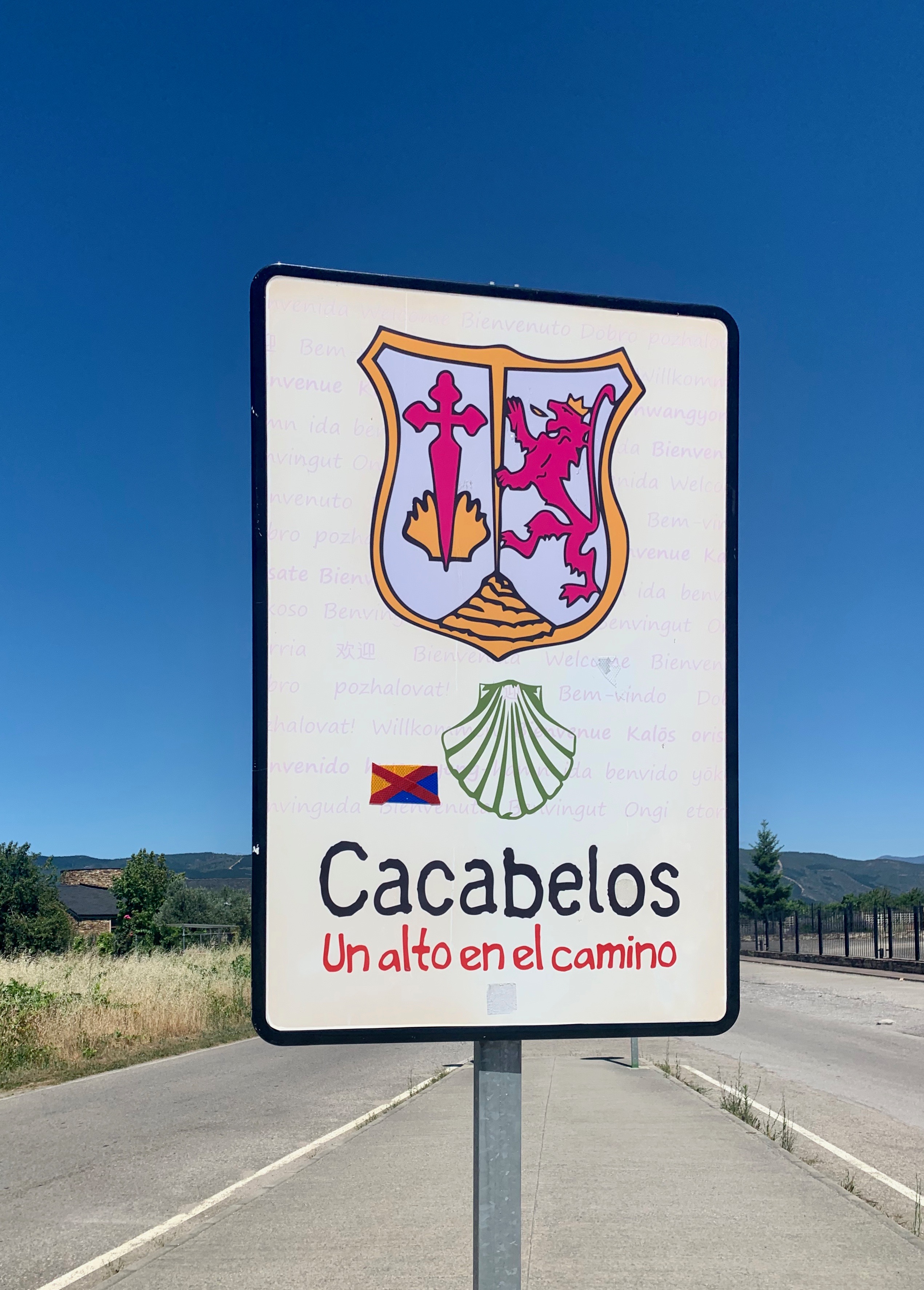
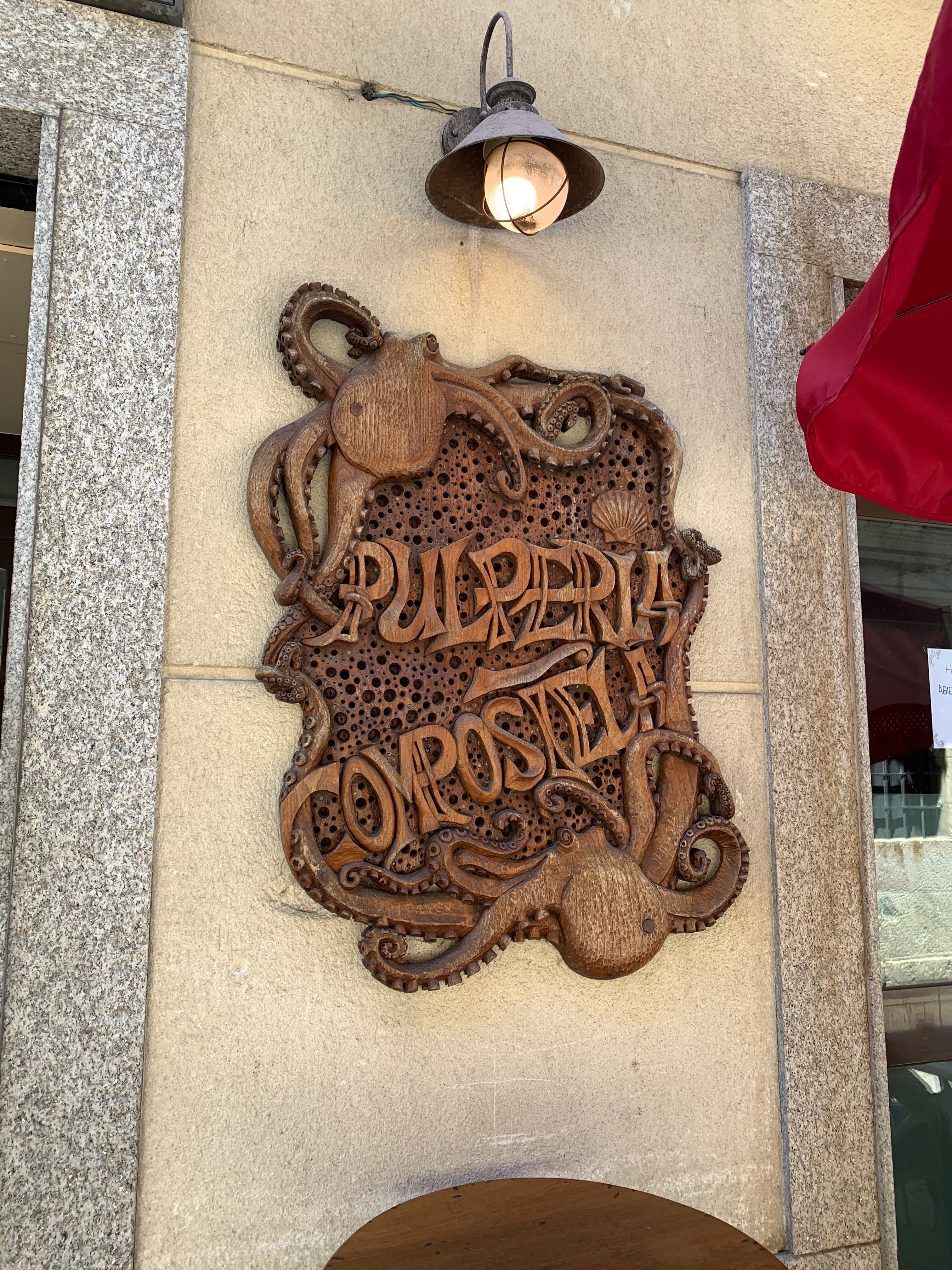









First stage
In the morning and after getting up very early, as will be the norm throughout my trip, I dedicate the first hour to leisurely strolling through Ponferrada and getting to know something about this beautiful city, from which I can only recommend you to visit.
The Ponferrada Castle and its surroundings are spectacular both by day and by night, and it has several interesting details of which I leave you some photographs.
Leaving Ponferrada and starting «the Way» itself is somewhat complicated, you have to go through half the city taking a long detour and it is not very signposted but after consulting a friendly national police, I quickly find the appropriate route.
When starting «the Way» one is full of enthusiasm, a desire for adventure and for everything to turn out as imagined. Full of strength, you do not yet feel the weight of backpack days, the kilometers on your back, your legs or your feet and you only have your five senses placed on everything around you, waiting to find beautiful details to photograph, pleasant experiences that live and why not, some other nice people to meet. Although the latter I will be able to verify that it will be complicated this year, beacuse of the pandemic, «the Way» will be almost deserted and I will enjoy a few days of spiritual peace in which what will attract my attention the most will be the sounds of nature, the noises of the wind in the trees and bushes, the water running freely through the streams and nooks of «the Way» and the occasional lovely animals that I will meet …
The entrance to the rural area once you leave Ponferrada is very pleasant and you never stop finding reasons to take photos, and the city life is not far behind because you find out the firsts kms with some cars, country houses and share a road with some other cyclists. But the route is quite beautiful and as soon as you start to walk the first forests begin to appear, the first grape vines 🍇 mencía, of whose fruit I will give a good account throughout my trip. I make a stop in Cacabelos in the Pulpería of Compostela, where although we are still in Castilla León, I tasted the first octopus on «the Way», which tasted glorious. And from there to Villafranca del Bierzo, the stage, perhaps because it is a bit late due to the visit I made to Ponferrada, and the very hot weather, made me go through the first fatigue of «the Way», in full sun and with some blunt slopes. But the arrival in Villafranca del Bierzo is wonderful, the town, although small, has a special charm, it is really beautiful, it is very careful and both the accommodation in the Micro Hostel Restaurant – La Puerta del Perdón, with an exquisite treatment by Hermi and a room well decorated, charme and with a very well used of its space.
Later in the evening, after the corresponding rest once I finished my first stage, (I fell asleep due to fatigue as soon as I entered the room, took a shower and dropped into the wonderful Queen-size bed (135-150cm wide) that they gave me ), I went to get to know the little village better and I was captivated by its charm small streets and squares, and precisely in one of them it was literally dark, as I started reading «Don Quijote de La Mancha» that I had pending for many years and whose adventures, infinitely more interesting than mine, will accompany me throughout «my Way». At night, dinner at «Mesón Don Nacho» recommended by my friend Fernando, a native of Ponferrada and who knows the area how could not be less, very well, where I will be able to taste some wonderful lamb chops washed down with some great wines.
Segunda etapa
A la mañana siguiente no necesito madrugar en exceso ya que he acortado la segunda etapa del Camino un poco a cambio de aumentar la tercera (bien que me acordare de ello al dia siguiente) y solo tengo por delante unos 16-17 km hasta Vega de Valcarce, los cuales se hacen muy cortitos y en gran medida se transita junto a la carretera nacional, por lo que no hay mucho contacto directo con la naturaleza. Allí en Vega de Valcarce, aldea pequeñísima, donde solo me encuentro una tienda abierta y un par de establecimientos para comer, me quedaré a dormir en el Hostal El Recanto en la habitación «Anochecer» donde la encantadora Blanca, me atiende de cine tanto ella como en su pequeña panadería junto a un riachuelo que esta frente a la casa y en cuyos jardines junto a la casa paso una agradable y calmada velada, bebiendo de nuevo vinos de la zona y disfrutando de la lectura hasta bien entrada la noche.
Hostal El Recanto, Vega de Valcarce








Second stage
The next morning I don’t need to get up too early as I have shortened the second stage of «the Way» a bit in exchange for increasing the third (I will really remember it the next day) and I only have about 16-17 km ahead to Vega de Valcarce, a tiny village, and most part of the travel goes along the national highway, so there is not much direct contact with nature. There in Vega de Valcarce, where I can only find an open shop and a couple of establishments to eat, I will rest at the Hostal El Recanto in the so comfortable «Anochecer» room where the kind Blanca, take care of all my needs as much as the staff in her small bakery next to a stream in front of the rural house and in whose gardens, I spend a pleasant and calm evening, again drinking local wines and enjoying reading until late at night.
Tercera etapa
Al día siguiente y tras desayunar en la panadería riquísimo pan recién hecho y un buen café, trato de salir bien temprano porque me espera la etapa más dura de todas cuantas realizo y según he leído una de las más duras de todo el Camino Francés, y bien que lo van a notar mis pies y resto de músculos de mi cuerpo, pero he de reconocer también que la etapa es simplemente maravillosa, tiene unos parajes realmente de cuento y es posible que sea la etapa que más me satisfizo de todo el camino y que más recuerdos me ha dejado. Es una etapa 100% de naturaleza con una durísima subida a O Cebreiro, pueblecito celta precioso de cuento de hadas donde degustaré un rico pulpo en el único establecimiento que veo abierto y en el que tengo que esperar para coger mesa a pesar de lo comentado antes de poca presencia de peregrinos, pero al que según parece vienen muchos lugareños a comer y que me va a dar las fuerzas suficientes para poder terminar los más de 30km de etapa, que culminarán en Triacastela.
La tarde la pasaré soñando con «Dulcinea del Toboso» (novia de Don Quijote, para el que no esté familiarizado con el libro) no sin antes refrescarme como es costumbre casi cada día, en el riachuelo que hay junto esta vez el hotel Duerming Casa de Barreira, casa con muchos años pero recientemente renovada y que posee unas muy bien preparadas y confortables habitaciones y baños y una calma infinita donde pude descansar plácidamente sin el menor ruido. La cena en el único establecimiento del pueblo, a base de vino y productos locales, me hace cada día ganar todo lo que pierdo en mis kilométricas travesías mañaneras.














Third stage
Next day and after having breakfast at the bakery with delicious fresh bread and a nice coffee, I try to leave very early because the hardest stage of all my way awaits me and according to what I have read one of the hardest of the entire «French Way», and so on my feet and the rest of the muscles of my body are going to notice it, but I must also admit that the stage is simply wonderful, it has some really fairytale places and it is possible that it is the stage that most satisfied me of my short whole way and that more memories have left me. It is a stage 100% of nature with a very hard climb to O Cebreiro, a beautiful Celtic fairy tale town where I eat an octopus in the only establishment that I see open and where I have to wait to get a table despite what I said before with little presence of pilgrims, but to which apparently many people from surrounding come to eat and that will give me enough strength to be able to finish the more than 30km of stage, which will culminate in Triacastela.
I will spend the afternoon dreaming about «Dulcinea del Toboso» (Don Quixote’s girlfriend, for those who are not familiar with the book) but not before refreshing myself as is customary almost every day in the stream next to the hotel Duerming Casa de Barreira, a house with many years but recently renovated and that has very well prepared and comfortable rooms and bathrooms and an infinite calm where I can rest peacefully without the slightest noise. Dinner in the only establishment in town, based on wine and local products, which makes me earn every day everything I lose on my long morning trips.
Cuarta etapa
La cuarta y última etapa, Triacastela – Sarria tiene dos posibles opciones o variantes, la puedes hacer por San Xil o por Samos, como finalmente me decanto, que aun siendo más larga, me atrae la idea de conocer el Monasterio Benedictino de Samos, aunque solo sea por fuera, ya que tiene las horas de visita restringidas por la pandemia y hoy voy escaso de tiempo, ya que tendré que llegar antes del mediodía a Sarria para poder tomar el único tren a Santiago y único medio de desplazamiento posible durante todo el día. Es por ello que salgo muy muy temprano y no desayunaré hasta mí llegada a Samos, el camino hasta aquí es casi desierto y algo fresco, ya que estará el cielo encapotado gran parte de la mañana.
El Monasterio de Samos es una maravilla, lástima que esté cerrado a estas horas, llego antes de las ocho de la mañana a Samos y me conformo con verlo desde los exteriores. Tras un buen desayuno en el de nuevo único establecimiento abierto en todo el pueblecito y tomar las pertinentes fotos de rigor, me dispongo a seguir el bonito y muy tranquilo camino hasta Sarria, con numerosa vegetación en su primera etapa y donde me cuentan en el bar donde desayuné, hace unos años, una turista alemana fue atacada por un oso, lo que me hace estar un pelín más alerta de lo habitual. Bonitas casas rurales y mucho sonido de aguas recorriendo libremente los caminos y la naturaleza, brisa fresca por doquier y algun que otro animal rumiante será prácticamente todo lo que me encuentre hasta la entrada a Sarria, que aun teniendo solo algo más de trece mil habitantes, me da la impresión de ser una gran ciudad, tras las pequeñas aldeas de los últimos días. Voy directo a la estación de tren debido a las prisas y hago parada obligatoria en Orense, donde tengo un par de horas para comer y disfrutar de la ciudad. A destacar el bonito Puente Romano de piedra del Siglo I, conocido como Ponte Vella o Puente Mayor, y la zona alrededor de la Catedral, sus bonitas Plazas y la zona de las piscinas termales de As Burgas. El paseo dura un par de horas y me parece escaso, acostumbrado a tanta caminata estos últimos días…











Orense







Fourth stage
The fourth and last stage, Triacastela – Sarria has two possible options or variants, you can do it for San Xil or for Samos, as I finally decided, which even though it is longer, the idea of knowing the Benedictine Monastery of Samos attracts me much, although just would be able to watch it from the outside, since visiting hours are restricted by the pandemic and today I am short of time, since I will have to arrive before noon to Sarria to be able to take the only train to Santiago and the only way of travel possible throughout the day. That is why I leave very very early and I will not have breakfast until I arrive in Samos and «the Way» here is almost deserted and somewhat cool, since the sky will be overcast for much of the morning.
The Samos Benedictine Monastery is wonderful, too bad it is closed at this time, I arrive in Samos before eight in the morning and I am content to see it from the outside. After a good breakfast in the once again only establishment open in the whole town and taking the pertinent photos of rigor, I am ready to follow the beautiful and very quiet road to Sarria, with numerous vegetation in its first stage and where they told me in the bar where I had breakfast, that a few years ago, a German woman tourist was attacked by a bear, which makes me a little more alert than usual. Beautiful rural houses and a lot of sounds of water freely traveling the roads and nature, fresh breeze everywhere and the occasional ruminant animal will be practically everything that I find until the entrance to Sarria, which even having only a little more than thirteen thousand inhabitants, it gives me the impression of being a great city, after the small villages of the last days. I go straight to the train station due to the rush and I make a mandatory stop in Orense, where I have a couple of hours to eat and enjoy the city. To highlight the beautiful Roman stone bridge from the 1st century, known as Ponte Vella or Puente Mayor, and the area around the Cathedral, its beautiful Squares and the area of the thermal pools of As Burgas. The walk lasts a couple of hours and it seems scarce to me, used to so much walking these last days …
Santiago de Compostela
La llegada a Santiago de Compostela es ilusionante, aunque sea en tren y no a pie, trato de ir desde la estación hasta el hotel, que luego comentaré detenidamente, soltar la mochila, tomar una ducha rápida e irme directamente al Centro Historico de Santiago, declarado Patrimonio de la Humanidad, a presentar mis respetos al Apóstol desde la Plaza de la Catedral, ya que las visitas, lamentablemente, están muy restringidas.
Y me presento en la Plaza del Obradoiro con la sensación del deber cumplido, de la satisfacción de haber realizado mi primer Camino de Santiago, que aunque muy cortito, ha sido al mismo tiempo intenso en sensaciones, fortalecedor en lo espiritual y solo tengo ganas de volver y ponerle fecha a la siguiente visita, espero que más larga, con algo más de experiencia y con mayor número de peregrinos.
En Santiago haré 2 noches, para recuperar fuerzas y disfrutar de esta bonita ciudad, a la que cada día me gusta mas volver, pernoctaré en dos establecimientos bien distintos, la primera noche en el Gran hotel Los Abetos, maravilloso y grandioso hotel familiar, re-abierto hace pocas fechas y con unas instalaciones de lo mejor que se puede encontrar actualmente en la ciudad, la atención y profesionalidad es exquisita y me gustaría resaltar la elegancia, decoración y tamaño de las habitaciones y baños, que parecen más de un 5* que las 4* que posee en realidad. Disfrutaré de cada momento del hotel, sus vistas a Santiago, sus exteriores, piscina e incluso una bonita y pequeña Capilla privada, asi como de su maravilloso desayuno, excepcionalmente completo.
Gran Hotel Los Abetos


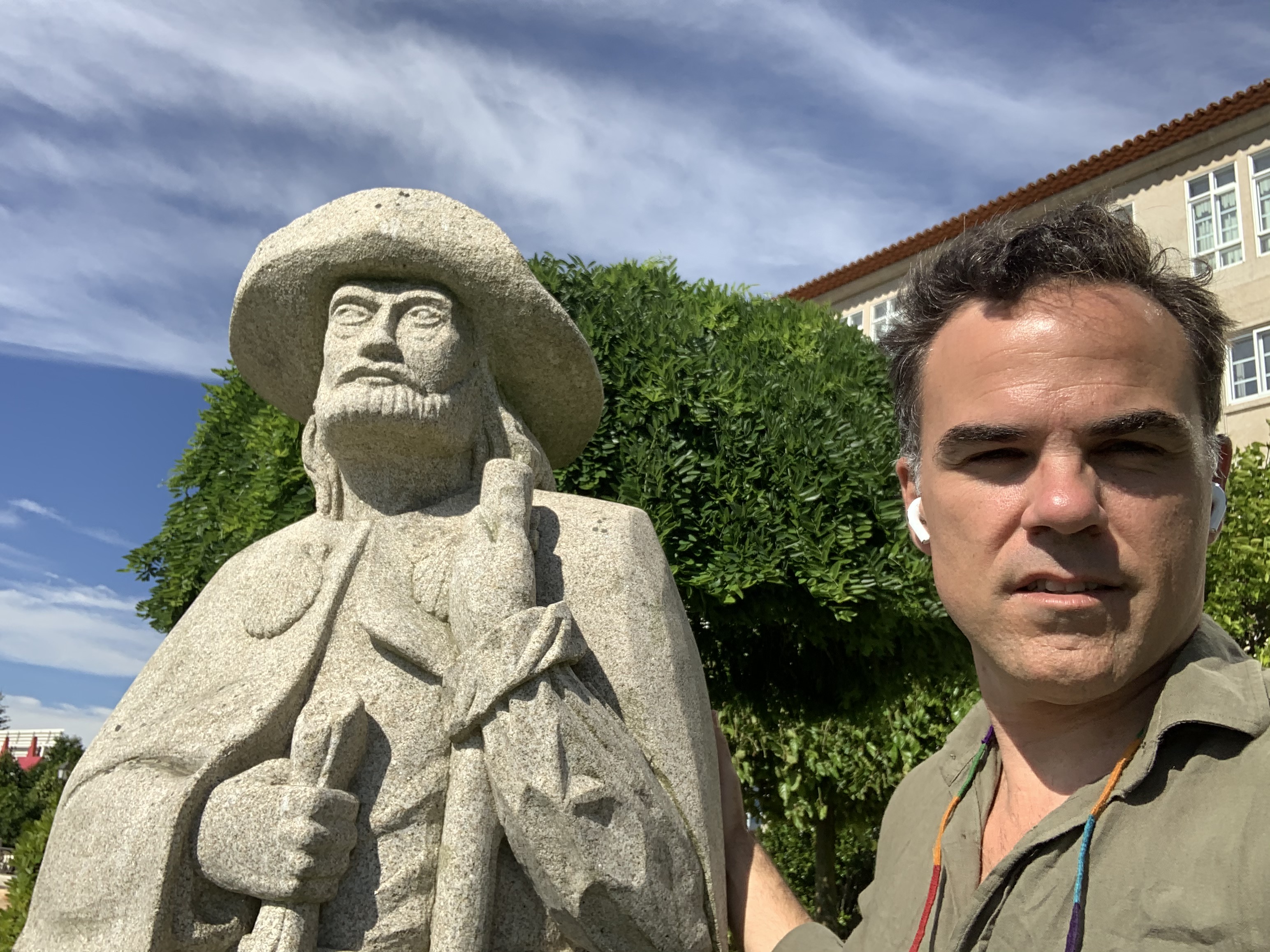
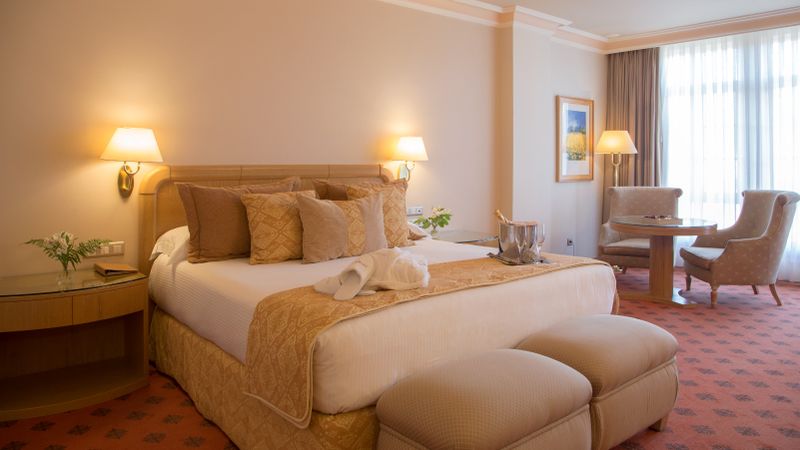




La segunda noche me alojaré en una casa rural al otro lado de la ciudad, A Casa da Torre Branca, un pequeño alojamiento o Casa Rural con Encanto, regentado por una familia maravillosa, que hará que me sienta como en mi propia casa desde el momento en que traspaso sus puertas. La calidez del trato recibido es inmejorable, los detalles de las habitaciones y salones, el almuerzo y desayuno completamente familiar y con productos 100% locales y las historias que comparte conmigo uno de los miembros de la familia me dejan con un sabor de boca y una impresión inmejorables sobre A Casa da Torre Branca, la cual no puedo más que recomendaros en vuestra próxima visita, tanto como el Gran Hotel Los Abetos, valores seguros en vuestra visita a Santiago.
A Casa da Torre Branca






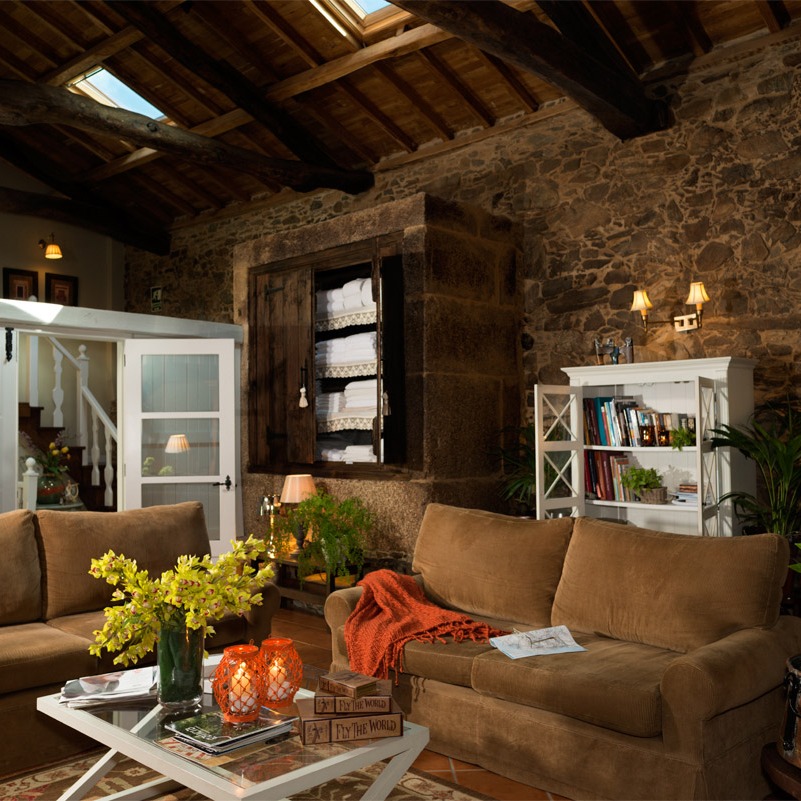
A destacar la gastronomía de Santiago de Compostela, realmente se come muy bien en toda Galicia y en Santiago en particular. Me gustó mucho, sobre todo por el trato que me dieron, además de por la comida y bodega, el Restaurante ACDC, abierto hace 5 años y donde pase una velada muy agradable y estupendamente bien atendido por Paula y Suso, que son dos amores. Está situado en pleno centro de Santiago, y tiene una carta muy variada, con algún toque de modernidad, o Rock & Roll, como les gusta decir a ellos.
ACDC Restaurante




Santiago de Compostela
The arrival in Santiago de Compostela is exciting, even if it is by train and not on foot, I try to go from the station to the hotel, which I will later comment carefully, drop my backpack, take a quick shower and go directly to the Historic Center of Santiago declared a World Heritage Site, to pay my respects to the Apostle from the Plaza de la Catedral, since visits, unfortunately, are very restricted.
And I appear in the Plaza del Obradoiro with the feeling of having fulfilled my duty, of the satisfaction of having made my first «St.James Way», which although very short, has been at the same time intense in sensations, calmed down in the spiritual and I just think about coming back and set a date for the next visit, I hope longer, with a little more experience and with a greater number of pilgrims.
In Santiago I will spend 2 nights, to regain strength and enjoy this beautiful city, to which I like to return more every day, I will spend the night in two very different establishments, the first night at the Gran Hotel Los Abetos, a wonderful and great family hotel, re open a few dates ago and with the best facilities that can be found today in the city, the attention and professionalism is exquisite and I would like to highlight the elegance, decoration and size of the rooms and bathrooms, which seem more than 5* than the 4* they actually own. I will enjoy every moment in the hotel, its views of Santiago, its exteriors, swimming pool and even a beautiful and small private Chapel, and its wonderful breakfast, exceptionally complete.
The second night I will decide for a rural house on the other side of the city, A Casa da Torre Branca, a small accommodation or Charming Rural House, run by a wonderful family, which will make me feel at home from the moment in which I trespassed its doors. The warmth of the treatment received is unbeatable, the details of the rooms and lounges, the completely familiar lunch and breakfast with 100% local products and the stories that one of the family members shares with me leave me with a taste in my mouth and a unbeatable impressions of A Casa da Torre Branca, which I can only recommend on your next visit, as well as the Gran Hotel Los Abetos, great values on your visit to Santiago.
I want to highlight the gastronomy of Santiago de Compostela, you really eat very well throughout Galicia and in Santiago in particular. I liked it a lot, especially for the treatment they gave me, in addition to the food and wine cellar, the ACDC Restaurant, opened 5 years ago and where I spent a very pleasant evening and magnificently well attended by Paula and Suso, who are two loves. It is located in the heart of Santiago, and has a very varied menu, with a touch of modernity, or Rock & Roll, as they like to say.





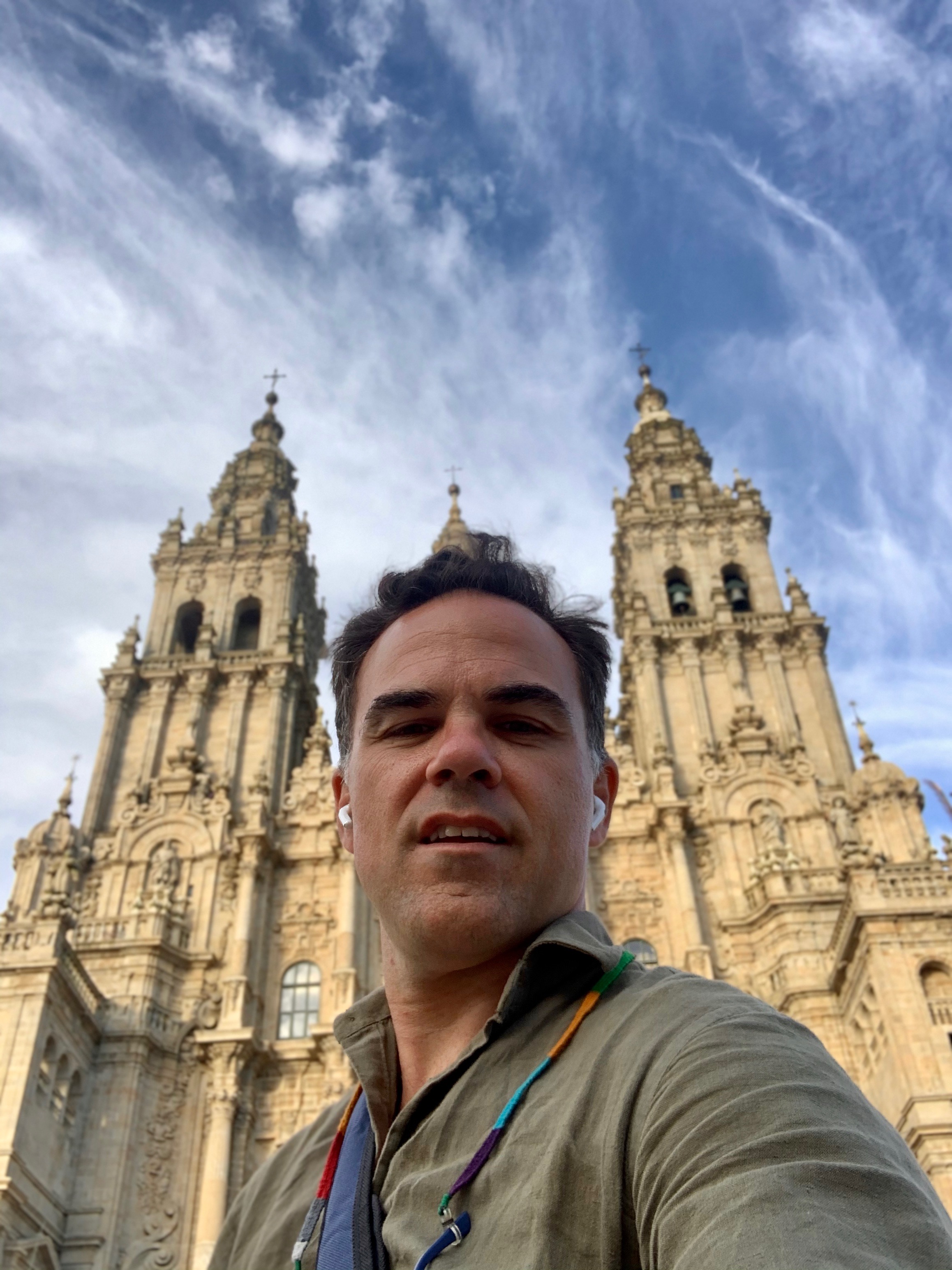



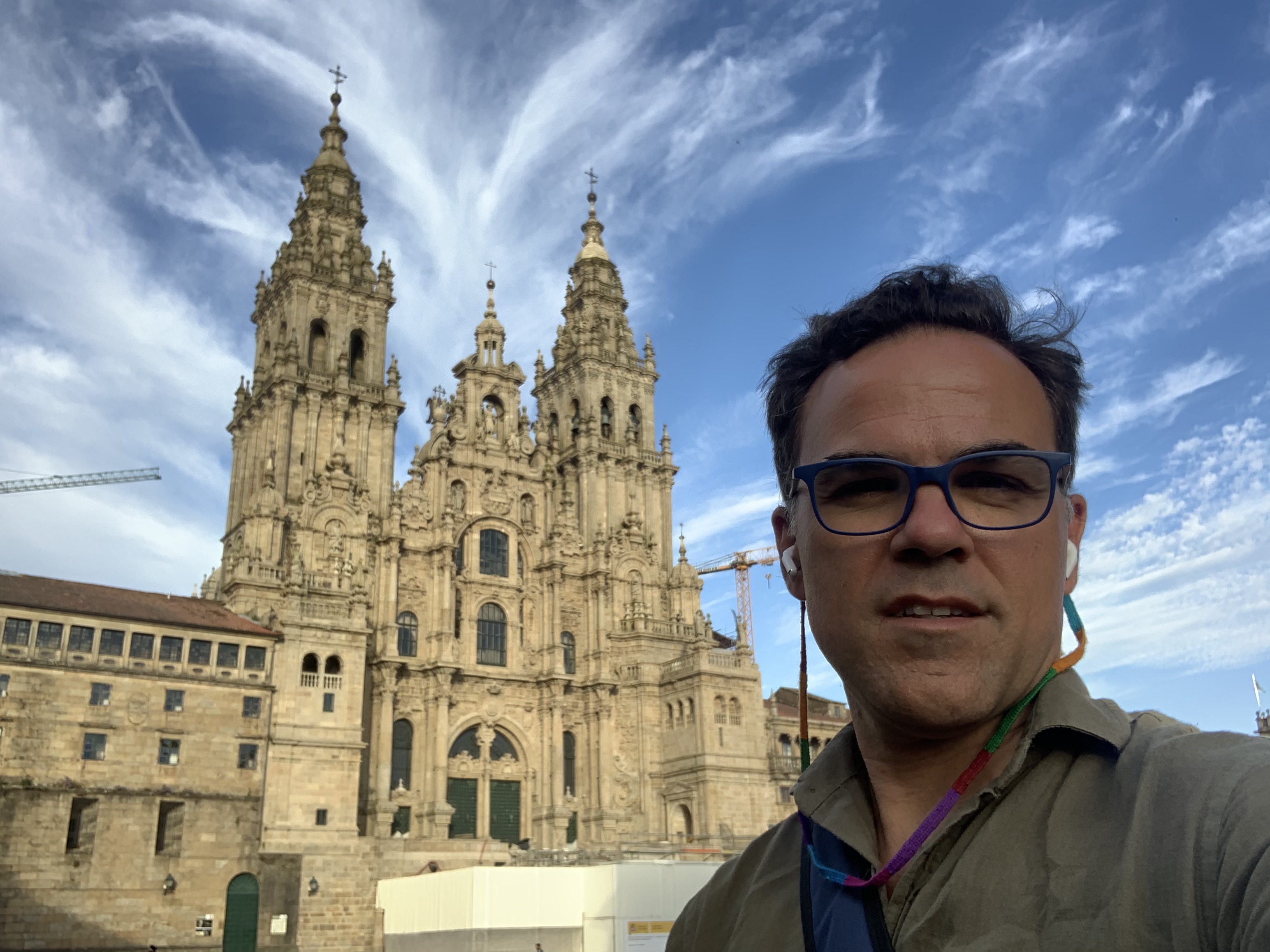





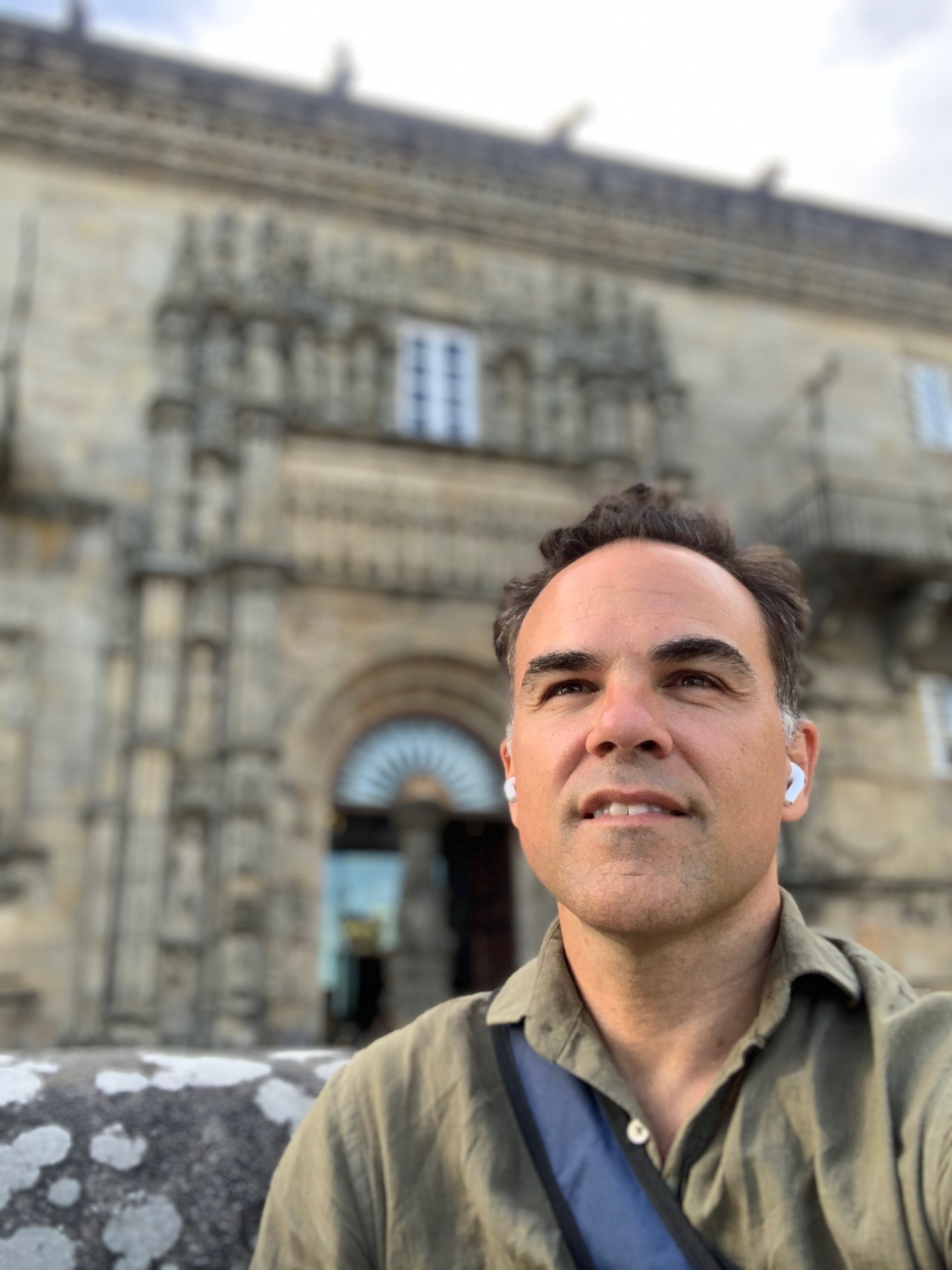
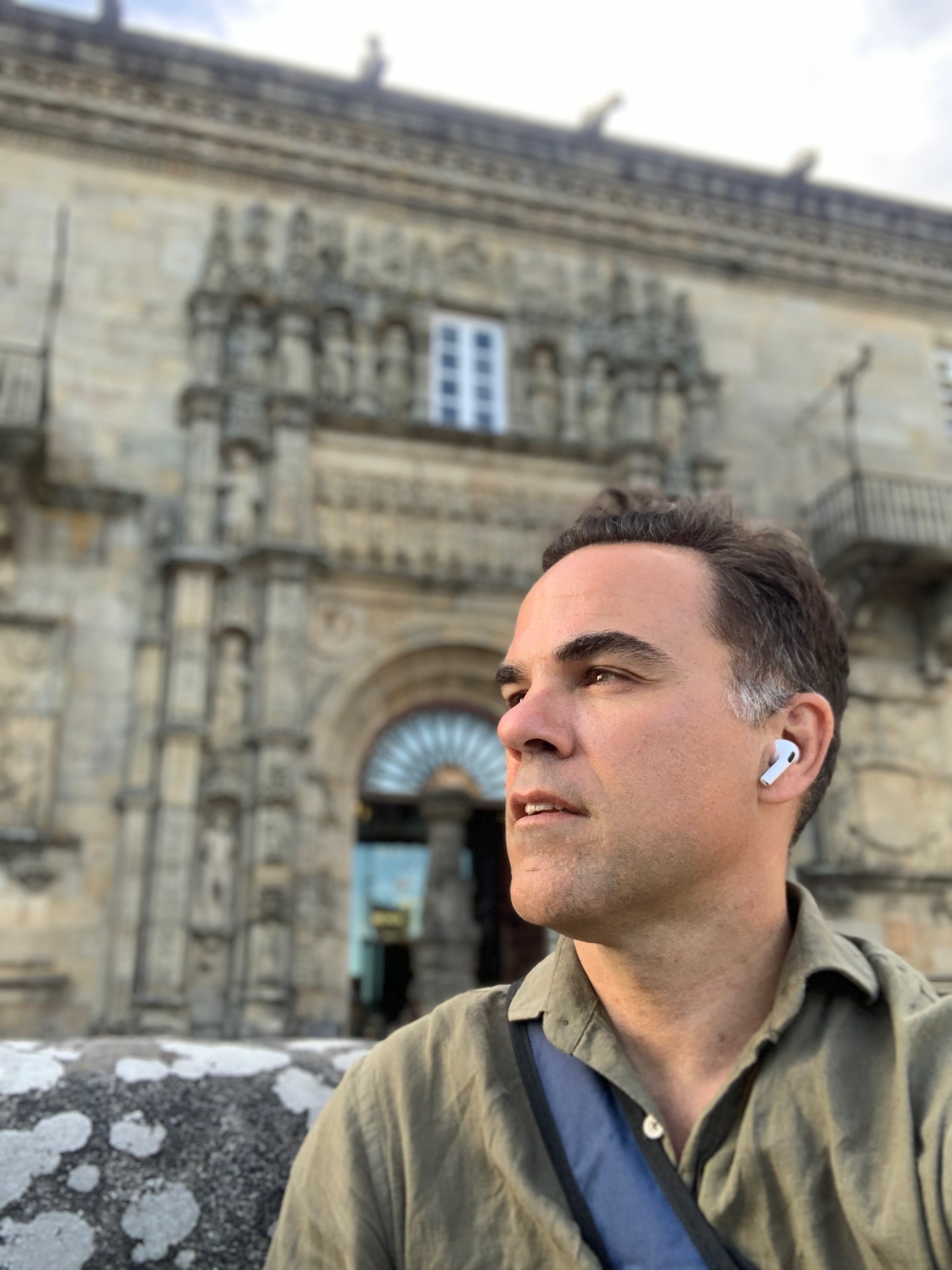







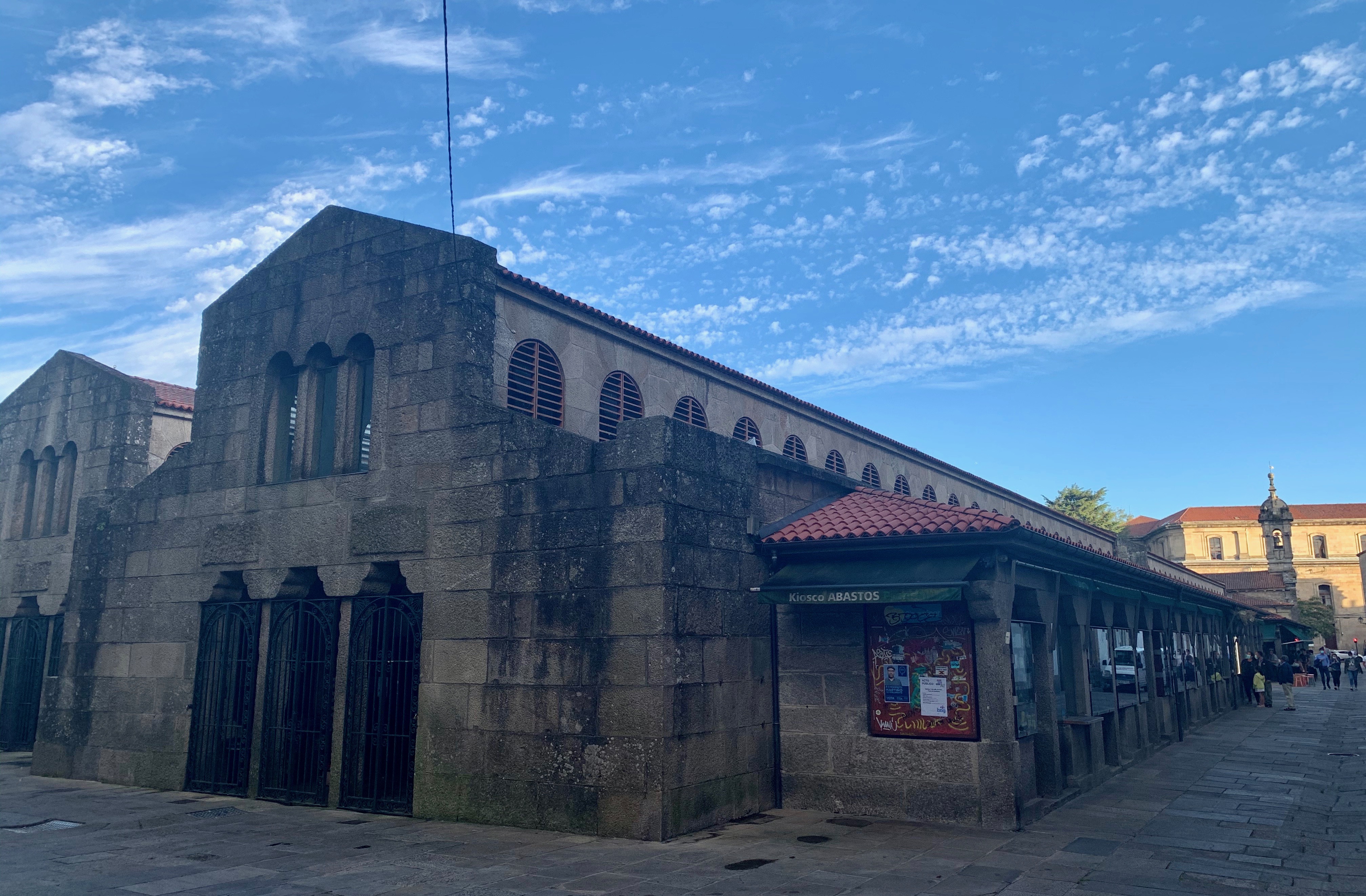
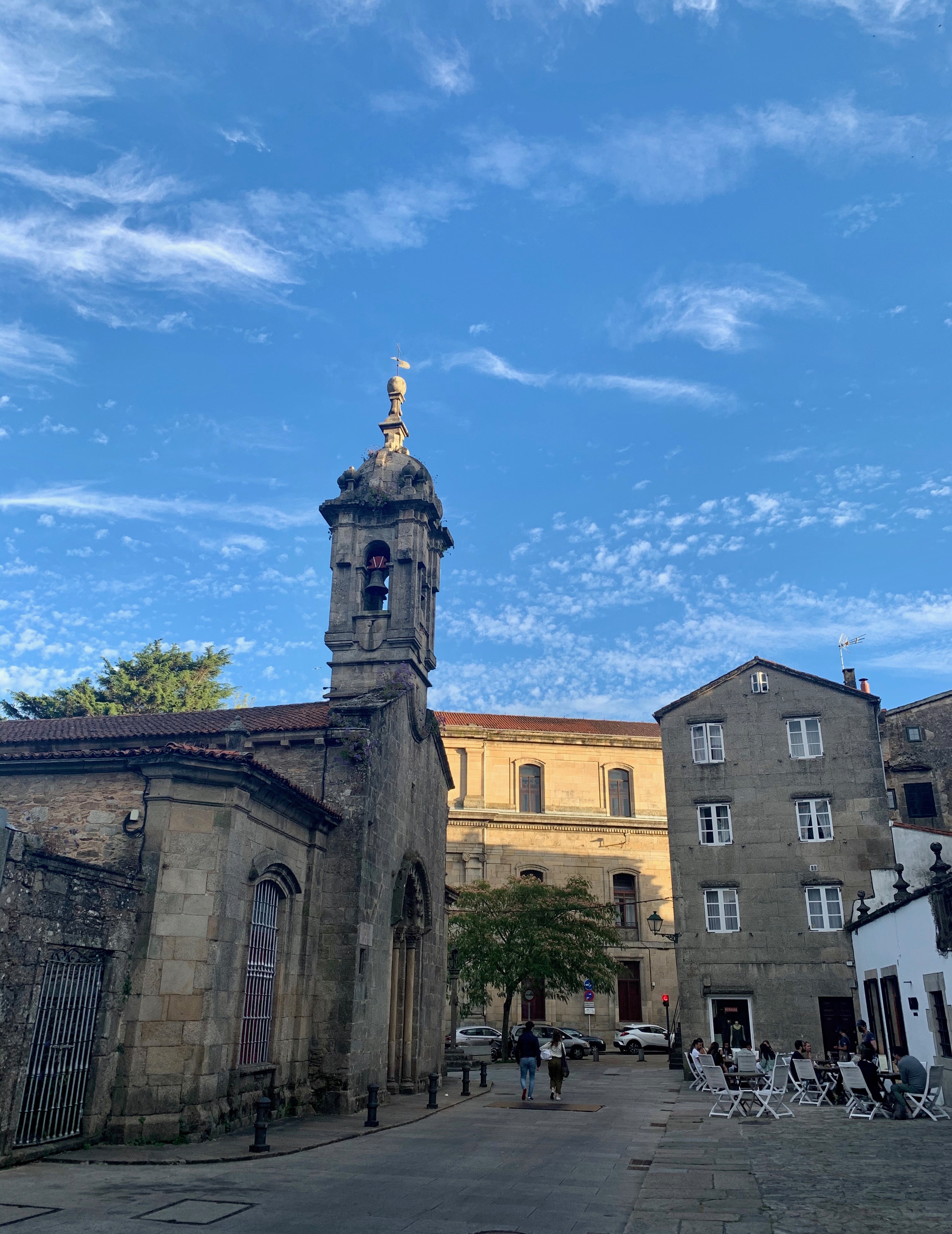



Hasta la próxima!
Inolvidable, irremplazable e insustituible, solitario, relajado, tranquilo, ilusionante, sano y necesario, sosegado, divino y celestial, … regreso a casa con la mochila cargada de bonitos recuerdos, sensaciones y las pilas a tope para mi siguiente aventura, de momento, regresar a África en unos días y volver a la rutina del trabajo. Que me encontrare? Eso solo Dios y el destino lo saben… Feliz semana a todos!

See you soon!
Unforgettable, irreplaceable, lonely, relaxed, calm, exciting, healthy and necessary, relaxing, divine and heavenly, … I return home with a backpack full of beautiful memories, sensations and full batteries for my next adventure, by the moment, return to Africa in a few days and go back to the routine of work. What will I find? That only God and destiny knows … Happy week everyone!


